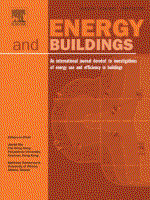New Paper in Energy & Buildings
How spatio-temporal resolution impacts urban energy calibration

We are thrilled to share the results of our recent study, addressing the crucial role of Urban Energy Models (UBEMs) in evaluating the energy performance of buildings, ranging from individual buildings to entire districts. UBEMs are essential tools, relying heavily on data related to geometries and measurements to create accurate energy models. However, there’s been limited research examining the impact of spatial and temporal resolution on simulation outcomes due to comparison difficulties and the absence of a standardized procedure for reporting simulation errors.
In our research, we reviewed the existing literature on UBEM validation against measured energy data and identified significant discrepancies in accuracy reporting. This led us to articulate the need for consistent accuracy reporting and introduce a multi-dimensional Level of Detail (LoD) specification for UBEM, encompassing geometry, thermal zoning, and the spatio-temporal resolution of measured data used to calibrate models.
Our case study focused on a university campus consisting of 70 buildings, offering an extensive testbed for our work. We successfully demonstrated the efficacy of Bayesian calibration from the individual building level to the aggregated level. The results of our research suggest that the accuracy of urban energy predictions at an annual temporal resolution can be significantly enhanced by using building-level data for calibration.
However, in situations where privacy is a concern, data should be aggregated based on primary use type. Our research also found that using monthly data to calibrate uncertain input parameters did not improve the accuracy of the models, as the obtained posterior distributions for selected parameters weren’t informative for monthly data. To overcome this, we proposed a computationally costly yet effective solution: seasonal calibration.
This research represents a significant step forward in our understanding of UBEMs and their potential for improving energy performance at multiple scales. We are eager to build on this work and continue to advance the field of building energy modeling. Stay tuned for more updates from our dynamic research team!
Dilsiz, Aysegul Demir, Kingsley E. Nweye, Allen J. Wu, Jérôme H. Kämpf, Filip Biljecki, and Zoltan Nagy. “How Spatio-Temporal Resolution Impacts Urban Energy Calibration.” Energy and Buildings 292 (August 1, 2023): 113175. https://doi.org/10.1016/j.enbuild.2023.113175.